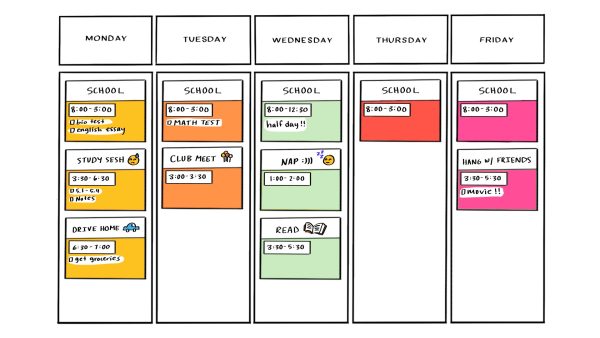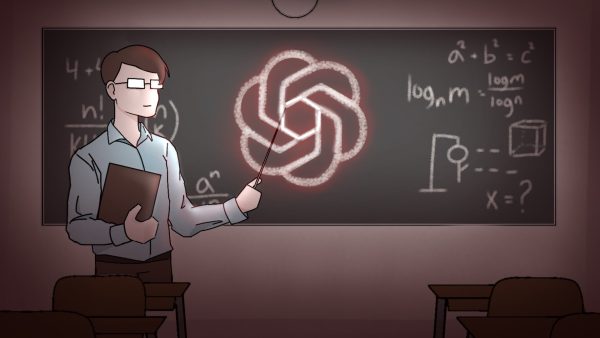Students shouldn’t flip over classrooms
New teaching trend causes questions, unrest
Although my days here at the Gonk are numbered and the effect that a potential shift to flipped classrooms would have on me is minimal, I feel it is my duty to defend what is right for the future education of the Tomahawks.
The idea of a flipped classroom is simple; you listen to lectures online (whether made by the teacher or someone else) at home and do homework or activities in class
Many teachers are starting to embrace this concept including some at ARHS, but this system puts too much responsibility on the student. Flipped classrooms make it the duty of the student to learn the material, and it is the teacher’s job to give the students the information necessary to understand all the concepts they need to know. It is unreasonable to think that the student should be responsible for the job of the teacher as well.
Here at Algonquin, we are blessed with many fantastic teachers, so why not utilize them? Furthermore, it is no secret that many students struggle to stay motivated and complete homework during the year. Teaching yourself something requires a great amount of focus and determination, so if many students aren’t doing the mindless worksheets assigned to them for homework they certainly will not be taking the time to try to learn the material on their own.
While this system might work in a perfect world where every student goes home and takes the time to thoroughly go through and try to grasp the concepts taught in the video, most high school students lack both the time and the motivation to teach themselves.
Many experts point to the success of sites like Khan Academy, which has become increasingly popular for its tutorials on various subjects. However, students usually use this resource to supplement their learning in class for especially tricky topics. Sites like Khan Academy wouldn’t be able to teach kids everything that is taught to them in school, and if they could they would make the job of a teacher unnecessary.
Flipped classrooms are the latest education craze, but I say if it ain’t broke, don’t fix it. The conventional teaching method has worked at Algonquin for years, and unless that somehow changes there is no reason to take this risk and change the way classes are taught.
A donation of $40 or more includes a subscription to the 2024-25 print issues of The Harbinger. We will mail a copy of our fall, winter, spring and graduation issues to the recipient of your choice. Your donation supports the student journalists of Algonquin Regional High School and allows our extracurricular publication to purchase equipment and cover our annual website hosting costs.









Jen Jiang • May 7, 2014 at 12:44 pm
I stumbled upon the Harbinger amongst the newness of the Algonquin website. I must say as an alum of Algonquin, flipped classrooms are what college classrooms are like. The professors, or in this case teachers, don’t do much teaching but instead answering of questions. You ask yourselves why college students have so much free time. It’s not to party, drink, or hang out with friends completely, it’s to study. College is a lot of self-study and I can tell you that now that I’ve just finished my freshman year of college.
Going into my college with four years of “un-flipped” Algonquin and it was like a whole new world. I didn’t expect what I got because I didn’t have a flipped college. So next to what Mr. Welty said above, flipped classrooms also prepare you for college.
At the end of the day, I am in favor of flipped colleges though I understand why a high schooler wouldn’t be.
Mr. Welty • Jan 9, 2014 at 8:45 am
Thank you for taking the time to share your opinion on this new way of teaching and learning. I piloted the flipped classroom in my physics classes last Spring to much success. This year is the first full year of my flipped classroom in honors and college-prep physics and college-prep astronomy. In that time my classroom has gone from teacher-centered to student-centered.
As teachers we are in the business of developing life-long learners. This is best stated by one of the flipped classroom pioneers, Aaron Sams, “My ultimate goal as a teacher is to help students become learners who can learn for themselves by themselves.” In my classroom students are responsible for their learning and encouraged to take ownership. The students have the choice as to where and when they access the content. It could be in school, at home, or on the bus to and from school or to and from an sports contest. Students then apply what they learn at home in class and have more time to ask questions about what they don’t understand. The class time is utilized to do more active learning and become a space where students have time to ask questions when they are stuck. With in class lectures gone, I now spend my time walking around answering questions, clarifying instruction, and asking questions of my students to probe for deeper understanding.
This is an exciting time in education as we see teachers using more technology and new teaching strategies. As teachers it is our professional obligation to seek out ways to improve instruction. Please be encouraged that it is for the best to increase student learning.
Sincerely,
Mr. Welty
* On a side note, a recent study by the University of North Caroline showed an average of 5% increase in test grades when flipped. This type of success is being confirmed in my classroom as my honors physics students performed over 5% better on their last quiz compared to last year.